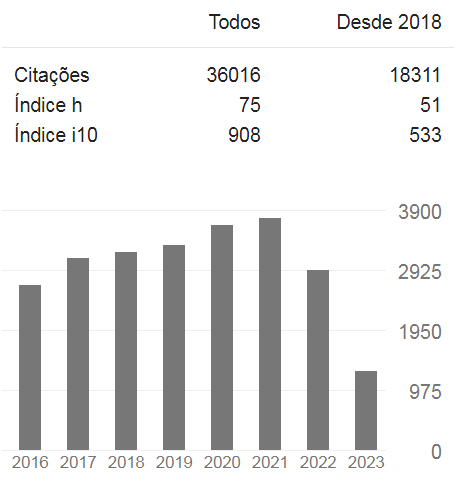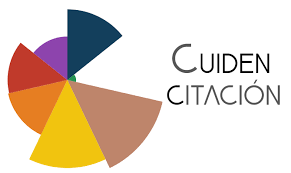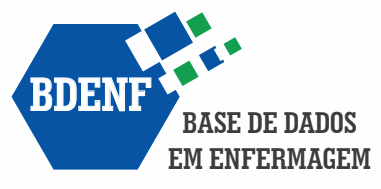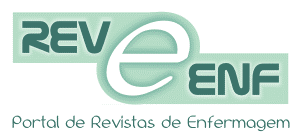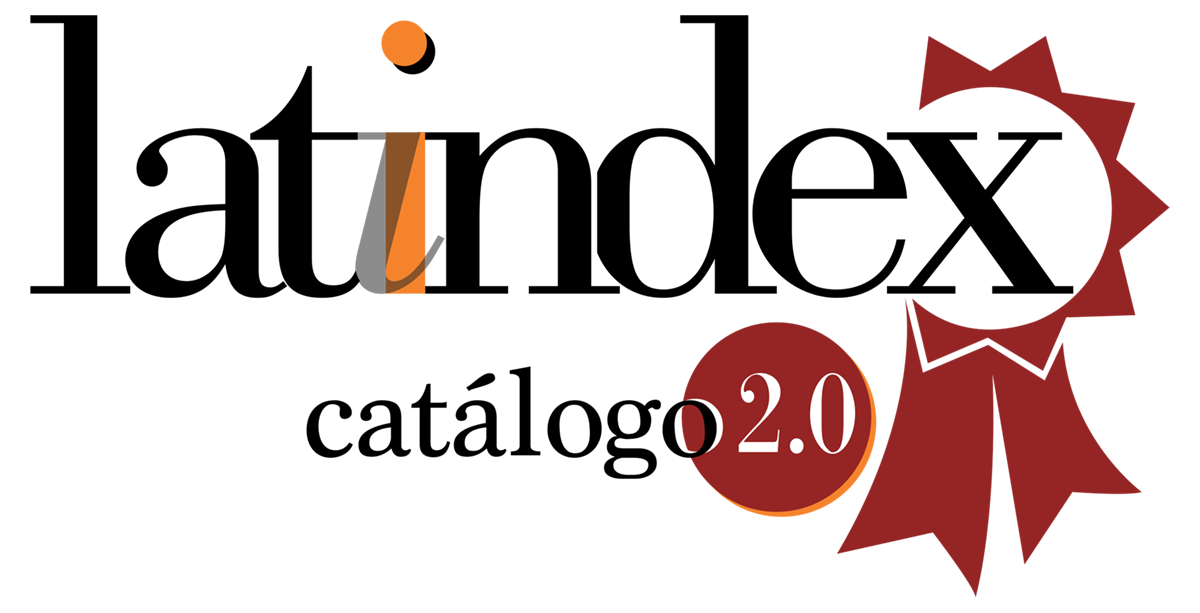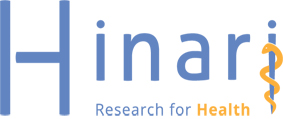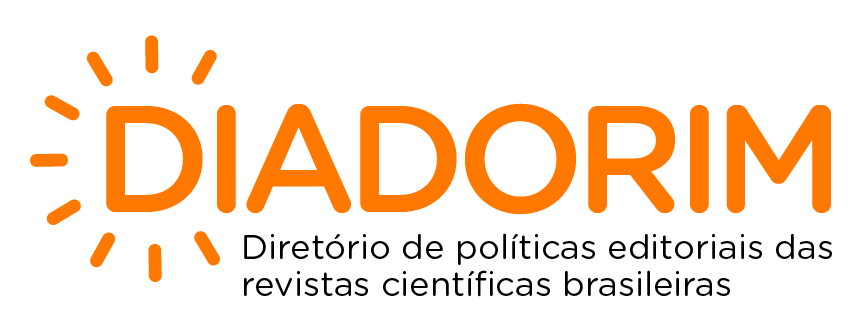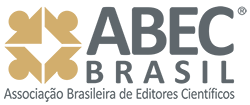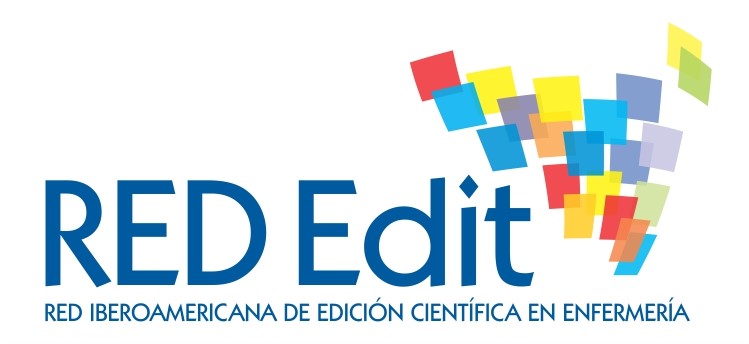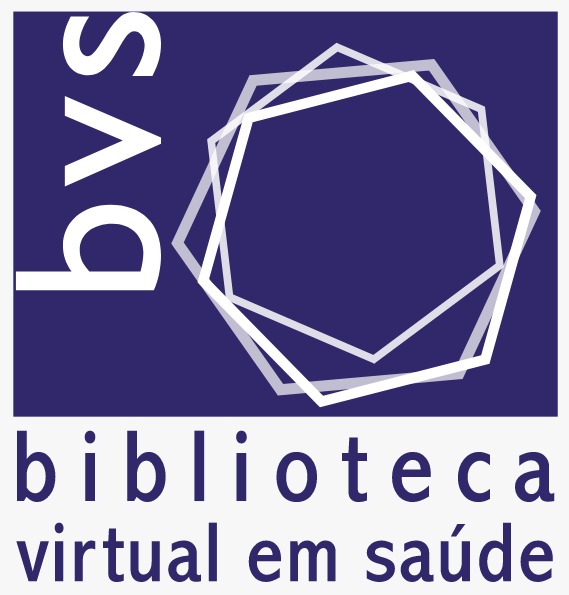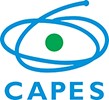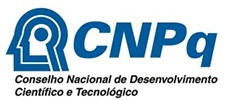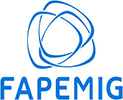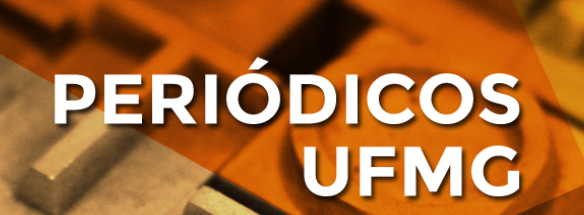Instructions to the Authors
- General information and publication costs
- Manuscript qualification strategies
- Presentation of the Manuscripts
- Manuscript Submission Process
- Approval, Publication/Availability and Dissemination
- Authorship, Editorial Accountability and Copyright
- Conflicts of Interest and Ethics in Scientific Publication
GENERAL INFORMATION AND PUBLICATION COSTS
All manuscripts submitted to REME must meet the "Editorial Policy" requirements and those set forth in the publication rules described in the "Instructions to the Authors".
Any and all publications consist in the following sections: EDITORIAL, RESEARCH, REVIEW, REPORT and REFLECTION, which characterize the types of manuscript. The categories of the articles are described in the EDITORIAL POLICY, under the "Types of Manuscript" item. Topicality, originality, thematic relevance and scientific and ethical consistency are considered.
In composition of the volume, the type of the articles is considered in the proportion of 80% for research (original articles) and 20% for the other categories (reviews, reports and reflection).
Publication is bilingual: Portuguese/English or Spanish/English. The manuscripts can be sent in Portuguese, English or Spanish, with their abstract in Portuguese, English and Spanish, that is, in the original language of the manuscript. The English version of the abstract will be responsibility of the translators/reviewers hired by the authors; the Spanish version (resumen) is REME's responsibility and is prepared after approval by accredited reviewers/translators.
The abstracts of manuscripts from the RESEARCH category must follow the structured format according to the parts of the text: objective, method, results and conclusion.
For manuscripts sent in Portuguese or Spanish, the author(s) must make the commitment to provide the translation into English, after approval for publication, by translators accredited by REME, with a cost for the author(s).
For manuscripts submitted in English, the author(s) must make the commitment to provide the English review and the translation into Portuguese by the translators accredited by REME, with a cost for the author(s).
Evaluation and publication of manuscripts are done after payment of the "evaluation" and "publication" fees.
Payment of the evaluation fee must be made only after the manuscript is ACCEPTED in the pre-selection process, for subsequent submission to "peer evaluation".
ACCEPTANCE for evaluation is communicated by the system to the corresponding author, who must pay the "evaluation fee" and forward the receipt as an "image" through the system in the following section: “Adicionar mensagem” (“Add message”). After receiving proof of payment of the evaluation fee, the Associated Editor, responsible for the manuscript, makes the indications of reviewers, who will analyze the manuscript's content. Payment of the publication fee must be made only if the manuscript is APPROVED for publication by the editors through peer review, and it will be charged at the time of editorial production, by means of a slip issued by FUNDEP (Fundação de Desenvolvimento da Pesquisa/UFMG).
The fee values are defined according to the cost spreadsheet and approved by the Deliberative Council. The values adopted since 2021 are as follows:
Evaluation fee: R$ 100.00 (one hundred reais);
Publication fee: R$700.00 (seven hundred reais).
The evaluation fee will not be reimbursed in case the manuscript is rejected.
Fees paid improperly will not be refunded.
The fee amounts must be paid by means of a BANK BILL, issued by the Research Development Foundation (Fundação de Desenvolvimento da Pesquisa, FUNDEP) - Project 4,828*1, upon approval of the manuscript in the PRE-SELECTION for evaluation and/or approval for PUBLICATION, forwarded through the submission system.
MANUSCRIPT QUALIFICATION STRATEGIES
The sections of the Journal and the types of manuscript (Research, Review, Report and Reflection) are described in the EDITORIAL POLICY.
REME recommends using the EQUATOR Network guidelines and guides in: https://www.equator-network.org when preparing the manuscripts. These guides consist of checklists and flowcharts, and their use can increase publication potential.
The EQUATOR Network offers guides for several types of study, available in: https://www.equator-network.org/library/resources-in-portuguese-recursos-em-portugues/, with links to the respective guides.
Guides for the main types of study:
|
TYPE OF STUDY |
GUIDES |
|
|
|
||
|
|
||
|
|
||
Source: Reporting guidelines for main study types. Available in: https://www.equator-network.org/
Some translations into several languages are available at this link:
https://www.equator-network.org/library/resources-in-portuguese-recursos-em-portugues/traducoes-de-diretrizes-para-relatos/
Randomized clinical trial: CONSORT
http://www.consort-statement.org/downloads/translations
Systematic reviews and meta-analyses: PRISMA
http://www.prisma-statement.org/documents/PRISMA Portugese checklist.pdf
Scope reviews: PRISMA-ScR
http://www.prisma-statement.org/Extensions/ScopingReviews ou
https://periodicos.ufpe.br/revistas/revistaenfermagem/article/downloadSuppFile/245223/33371
Observational studies in epidemiology: STROBE
https://www.equator-network.org/reporting-guidelines/strobe/
Qualitative studies: COREQ
https://www.equator-network.org/reporting-guidelines/coreq/ou https://www.scielo.br/j/ape/a/sprbhNSRB86SB7gQsrNnH7n/?lang=pt&format=pdf
PRESENTATION OF THE MANUSCRIPTS
Graphic Presentation
The manuscripts must be prepared in a text editor, Microsoft Word for Windows, or similar, updated version, generating “.doc” or “.docx” files, using the “Times New Roman” font, size 12, with 1.15 line spacing, standard A4 size (212 x 297 cm), 2.5 cm margins, and traditional paragraphs with a 2 cm indentation from the left margin. For interviewees' textual citations and speeches, font size 10, single-spacing and indentation must be used, without quotation marks. For references, size 10 and single spacing in numerical sequence must be used, with number alignment to the left. For the resumo/abstract/resumen, size 10, single spacing, and no paragraphs must be used, identifying the following parts: objective, method, result and conclusion, when applicable.
The number of pages and references is limited for the different types of articles, as indicated in the chart below. The number indicated includes preliminary pages, text, acknowledgments, references and illustrations. For the illustrations (graphs, engravings, photographs, maps, diagrams, drawings, tables, charts, formulas, models and others) a maximum of five is indicated, regardless of their type.
|
Type |
No. of characters/pages |
No. of references |
Model |
||
|
Editorial |
7.500 / 3 |
5 |
|||
|
Research (original article) |
27.000/ 15 |
25 |
|||
|
Review |
36.000/ 20 |
40 |
|||
|
Report |
18.000/ 10 |
10 |
|||
|
Reflection |
18.000/ 10 |
10 |
|||
The parts of a Manuscript
All the manuscripts must follow the structure and order set forth in the OJS submission system template used by REME:
PART 1
Indication of the section of the article
RESEARCH (original article reporting research results)
REVIEW (systematic, integrative, scoping)
REPORT (experience or case)
REFLECTION (articles of a reflective NATURE)
PART 2
a) Title and subtitle
Title prefix (Uma(s), A(s), Um, Umas, O(s), if any) and of title and subtitle (if any) in the original language must be indicated in the specific field for each of them. In Portuguese, for the articles presented in the Portuguese language; in English for those presented in the English language; and, in Spanish, for those presented in the Spanish language.
b) Descriptors
The descriptors or palavras-chave, keywords and palabras clave (from three to six), must be indicated according to the "Descriptors in Health Sciences" (DeCS) of BIREME, Latin American and Caribbean Center for Health Sciences Information, available at: http://decs.bvs.br/, which is a translation of the Medical Subject Headings (MeSH) from PubMed - Medline - belonging to the NIH National Library of Medicine, available in: http://www.ncbi.nlm.nih.gov/mesh.
PART 3
Authorship
a) First and last names of the authors
Indication of the full name(s) of the author(s) in the first field with the surname in the last field without prepositions, regardless of the language in which the document is written, in the second field indicated. All with no abbreviations. It is not necessary to include treatment pronouns or middle names in the field below the name and surname.
b) ORCID
It is mandatory to register the authors in the Open Researcher and Contributor ID (ORCID) and their incorporation, through the link sent by email, to the OJS submission system.
The ORCID field (in the authors' registry) must be filled in with the full address.
Example: https://orcid.org/0000-0000-0000-0000.
c) Institutional (affiliation) and geographic instances
Indication of the affiliation institution(s) corresponding to each author and their geographic location, in up to three hierarchical levels, from the highest to the lowest, followed by the location: city, state and country.
Example: Universidade Federal de Minas Gerais - UFMG, Escola de Enfermagem - EE, Departamento de Enfermagem Básica - ENB. Belo Horizonte, MG - Brazil.
d) Indication of the authors' contributions in preparation of the paper
Each author shall indicate the level of their contribution in preparation of the manuscript, as specified below, in compliance with the ICMJE guidelines.
|
AUTHORSHIP CONTRIBUTIONS |
|
|
CONTRIBUTION |
DESCRIPTION |
|
Funding acquisition |
Acquisition of institutional financial support for the project leading to this publication. |
|
Project Management |
Management and coordination responsible for planning and execution of the research activity. |
|
Resources Management |
Provision of study materials, reagents, materials, patients, laboratory samples, animals, instrumentation, computational resources or other analysis tools. |
|
Statistical analysis |
Application of statistical, mathematical, computational or other techniques to analyze or synthesize the study data. |
|
Data collection |
Management activities to annotate (produce metadata), manipulate and maintain research data (including the software code, where it is necessary to interpret the data itself) for initial use and later reuse. |
|
Conceptualization |
Ideas; formulation or evolution of encompassing research goals and objectives. |
|
Investigation |
Performance of a research process, specifically carrying out experiments, or collecting data/evidence. |
|
Methodology |
Methodology development or design; creation of models. |
|
Writing - Original Draft Preparation |
Creation and/or presentation of the published paper, specifically writing of the original draft (including substantial translation). |
|
Writing - Review and Editing |
Preparation, creation and/or presentation of the published paper by persons from the original research group, specifically critical review, comment or review - including pre- or post-publication stages. |
|
Software |
Programming, software development; design of computer programs; implementation of the computer code and supporting algorithms; testing existing code components. |
|
Supervision |
Supervision and leadership responsibility for planning and performing research activities, including external mentoring for the main team. |
|
Validation |
Verification, either as part of the activity or as a separate instance, of the overall replication/reproducibility of results/experiences and other research results. |
|
Visualization |
Elaboration, creation and/or presentation of the paper published, specifically data visualization/presentation. |
e) Corresponding author
Full name and email address of the author for correspondence.
PART 4
Abstract and submission conditions
Abstract
The abstract must contain up to 250 words, it should have single spacing, and be two font sizes lower than the size used in the text. For the "research" articles, the abstract must be presented in the structured format according to the sections of the manuscript: objectives, method, results and conclusion.
The abstract should only be included in the original language of the manuscript. The English version of the abstract will be the responsibility of the translators/reviewers hired by the authors; the Spanish version (resumen) is REME's responsibility.
SUBMISSION CONDITIONS
Declare and/or indicate the following information when present and/or attach the supporting document:
Funding Source
It is mandatory to indicate the institution(s) that supported or funded the research study and communication of the results, through grants or promotion of scientific and technological research and innovation.
Conflict of Interest
The authors must declare non-existence of any conflict of interest. For more information about conflicts of interest, please see the "Editorial Policy" tab in: "Conflicts of Interest, Ethical Aspects and Actions".
Clinical Trial
"Clinical Trials" must be registered in one of the "Clinical Trial Registries", validated by criteria established by the WHO and ICMJE.
Must be submitted accompanied by a copy of approval by a Research Ethics Committee with humans or animals according to the type of research. For Clinical Trials, RLAE follows the recommendations of the Latin American and Caribbean Center for Health Sciences Information (BIREME) / Pan American Health Organization (PAHO) / World Health Organization (WHO) for the Registration of Clinical Trials, of the International Committee of Medical Journal Editors (ICMJE). It requires the presentation of the Clinical Trials Approval Registry number, in a stage before conducting the study data collection, from one of the entities described below:
- Australian New Zealand Clinical Trials Registry (ANZCTR)
- ClinicalTrials.gov
- International Standard Randomised Controlled Trial Number (ISRCTN)
- UMIN Clinical Trials Registry (UMIN-CTR)
- WHO International Clinical Trials Registry Platform (ICTRP)
- Registro Brasileiro de Ensaios Clínicos (ReBEC)
More information about clinical trial registries can be found in: http://www.icmje.org/about-icmje/faqs/clinical-trials-registration/
For clinical trials, it is necessary to indicate the registration number at the end of the abstract.
Ethics Committee Number
In accordance with the rules contained in Resolutions No. 466/2012 and No. 510/2016 of the National Health Council (in Brazil), for the manuscripts involving research studies with human beings, the approval report by the Research Ethics Committee (Comitê de Ética em Pesquisa, CEP) of the institution where the survey was carried out must be presented. The number of such report must be indicated in this space. Attach the CEP approval document.
PART 5
CONTENT
The DOCUMENT, in Word, to be incorporated to the system through the UPLOAD function should not contain any data that identify the authors.
From this part, the content of the manuscript is presented, which includes the following, when relevant:
- Introduction;
- Development (material and method or description of the methodology, results, discussion and/or comments);
- Conclusions or final considerations;
- Acknowledgments (optional);
- References, in compliance with the Vancouver/ICMJE, Citing Medicine format available in: https://www.ncbi.nlm.nih.gov/books/NBK7256/
PART 6
Images
Illustrations (tables, figures, graphs and photographs) must be inserted directly into the text in an open/editable format (Word, Excel, PowerPoint, etc.). In diagramming it is essential that the file is editable.
About Manuscript Normalization
Manuscripts must be submitted in accordance with the requirements established in these instructions, prepared in accordance with the rules of the International Committee of Medical Journal Editors (ICMJE), "Recommendations for the Conduct, Reporting, Editing, and Publication of Scholarly work in Medical Journals" and "Uniform Requirements for Manuscripts - URM" -, which follows the "Citing Medicine" - The NLM Style Guide for Authors, Editors and Publishers - rules of the "National Library of Medicine - NLM” adopted by ICMJE.
These rules are available in full at the following addresses:
In Portuguese: http://www.bu.ufsc.br/ccsm/vancouver.html
In Spanish: https://biblioguias.uam.es/citar/estilo_vancouver
In English: http://www.nlm.nih.gov/bsd/uniform_requirements.html
A number of models and examples can be consulted in "Samples of Formatted References for Authors of Journal Articles" at: https://www.nlm.nih.gov/bsd/uniform_requirements.html
Citations in the text must be indicated using an Arabic numeral, superscript, without parentheses, after the period, corresponding to the references indicated at the end of the article.
The references are numbered consecutively, in the order in which they are mentioned/cited for the first time in the text.
Titles of journals are abbreviated according to the Journals Database - Medline/PubMed, available in: http://www.ncbi.nlm.nih.gov/entrez/query.fcgi?db=Journals, or with the BVS Health Scientific Journals Portal (Bireme/PAHO/WHO), available in: http://portal.revistas.bvs.br/
The illustrations must be included immediately after being mentioned, in compliance with the IBGE table presentation rule, 3rd ed. of 1993 (Available in: https://biblioteca.ibge.gov.br/visualizacao/livros/liv23907.pdf). Within each category, they should be numbered sequentially throughout the text.
Each illustration must contain a title and a source (from where it was extracted). The headers and keys must be sufficiently clear and understandable with no need to consult the text. References to the illustrations in the text should be made in parentheses, indicating the category and number of the illustration. For example: (Tabela 1).
Abbreviations, quantities, symbols and units must comply with the International Publication Standards. The first time that an abbreviation is used it must be preceded by its full term or expression, except for common units of measure.
Measurements of length, height, weight and volume must be expressed in units of the decimal metric system (meter, kilogram, liter) or their multiples and submultiples; temperatures, in degrees Celsius; and blood pressure values, in millimeters of mercury. All abbreviations and symbols must follow the international standards.
The acknowledgments must be included in a separate paragraph, before the references.
MANUSCRIPT SUBMISSION PROCESS
Manuscripts are submitted in the REME website through the OJS System, in the "Submissão Online" ("Online Submission") tab.
The instruction to submit manuscripts to the system are also available in the "Processo de Submissão" ("Submission Process") tutorial, available in: https://www.youtube.com/watch?v=Pus_57HpwTU
Documents for submission
|
Documents |
Obligatoriness |
How to use/send them |
|
Disclaimer and Transfer of Copyright and Authors' Contributions (click here to download) |
For all articles |
Download the template provided by the journal, type the article's title and authors' names, print it, sign it (all authors)**, scan it in PDF format and send it during the submission process. |
|
Approval by the Research Ethics Committee* |
For studies directly or indirectly involving human beings |
Scan them in PDF format and send them during the submission process. |
|
CONSORT checklist (click here to download)and flowchart (click here to download) |
For randomized clinical trials |
Download both documents, use them in writing of the article, fill them out, and send them during the submission process. |
|
PRISMA checklist (click here to download)and flowchart (click here to download) |
For systematic reviews and meta-analyses |
Download both documents, use them in writing of the article, fill them out, and send them during the submission process. |
|
PRISMA-ScR checklist and flowchart (click here to download) |
For scoping reviews |
Download both documents, use them in writing of the article, fill them out, and send them during the submission process. |
|
COREQ checklist (click here to download) |
For qualitative studies |
Download the document, use it in writing of the article, fill it out, and send it during the submission process. |
|
STROBE checklist (click here to download) |
For observational studies |
Download the document, use it in writing of the article, fill it out, verify that the items are met, and send it during the submission process. |
Note:
REME charges evaluation and publication fees. The authors whose articles were approved in the pre-analysis will have to pay the evaluation fee to continue in the peer evaluation process. If the article is approved for publication at the end of the peer and editor review process, it is the authors' responsibility to pay for the review and translation services of the approved article, as well as the publication fee.
When relevant, authors must inform whether the manuscript derives from a Thesis (or Dissertation) in accordance with the Statement of Responsibility and Transfer of Copyright and Author Contributions, the link to access the repository where the work is located must be informed.
*It must clearly inform the approval, the name of the person responsible for signing and issuing the document, the name of the institution/committee, the title of the study and the researcher (present the approval opinion in full).
**When there are authors unable to sign the Declaration of responsibility, transfer of copyrights and authors' contribution because they are in a different city from the other authors, it will be allowed to send more than one declaration, one with the signature and name of this author and another with the names and signatures of the other authors, respecting the correct authorship order.
When submitting a manuscript, the corresponding author must sign electronically, through the "Submission form".
APPROVAL, PUBLICATION/AVAILABILITY AND DISSEMINATION
Manuscript approval is carried out in the OJS system, with notification to authors, editors and reviewers. In the notification to the authors, step by step, all procedures necessary for editorial production are informed: standardization, normalization, Portuguese revision, forwarding to the author to approve the version with corrections, arrange for the payment of the publication fee and the translation of the manuscript into English and translation of the abstract into Spanish.
After translation into English, a DOI must be assigned to the UFMG Periodicals Portal. The secretariat controls all these procedures and, when completed, forwards the manuscript for editing. The publishing process is carried out by a specialized people following the graphic design of the magazine.
Each manuscript is diagrammed/edited in the Portuguese and English versions, revised and corrected until the final version is approved for publication and the respective PDF files are generated.
The PDFs of the articles in Portuguese and English are published on the UFMG journal portal, also with the HTML files. The dissemination of articles published in REME is carried out, in addition to its own page, on the UFMG School of Nursing page, on the UFMG Journal Portal, on the Minas Gerais Journal Portal, on the CAPES Journal Portal, on the databases of data and directories in which it is indexed, on social networks: Facebook and Instagram, on the REV@ENF and ABEC BLOGs and on the website of the Regional Nursing Council (COREN).
AUTHORSHIP, EDITORIAL ACCOUNTABILITY AND COPYRIGHT
REME limits the number of authors for submission of a manuscript to a maximum of 8 and defines that all and only researchers who, having expressly agreed with this indication, have made direct and substantial intellectual contributions to conception or conduction of the research whose results are presented therein must be indicated as its authors. It also states that the respective contribution by each author must be recorded, according to the definitions of contributions presented in these instructions - Part 3.
REME does not assume any responsibility for the opinions stated in the articles. Any concept, idea or opinion stated in the manuscripts, as well as the origin and accuracy of the citations therein contained, are the author(s) sole responsibility. Omissions will be resolved by the Editorial Board.
The authors must transfer copyright of the article to REME, upon submission, according to the OJS system instructions.
CONFLICTS OF INTEREST, ETHICAL ASPECTS AND ACTIONS
The issues regarding conflicts of interest, ethical aspects and the procedures adopted when misconduct is evidenced in submitted manuscripts are described in the EDITORIAL POLICY. REME uses "CheckForPlagiarism.Net" and "Ithenticate" softwares to verify similarities.


